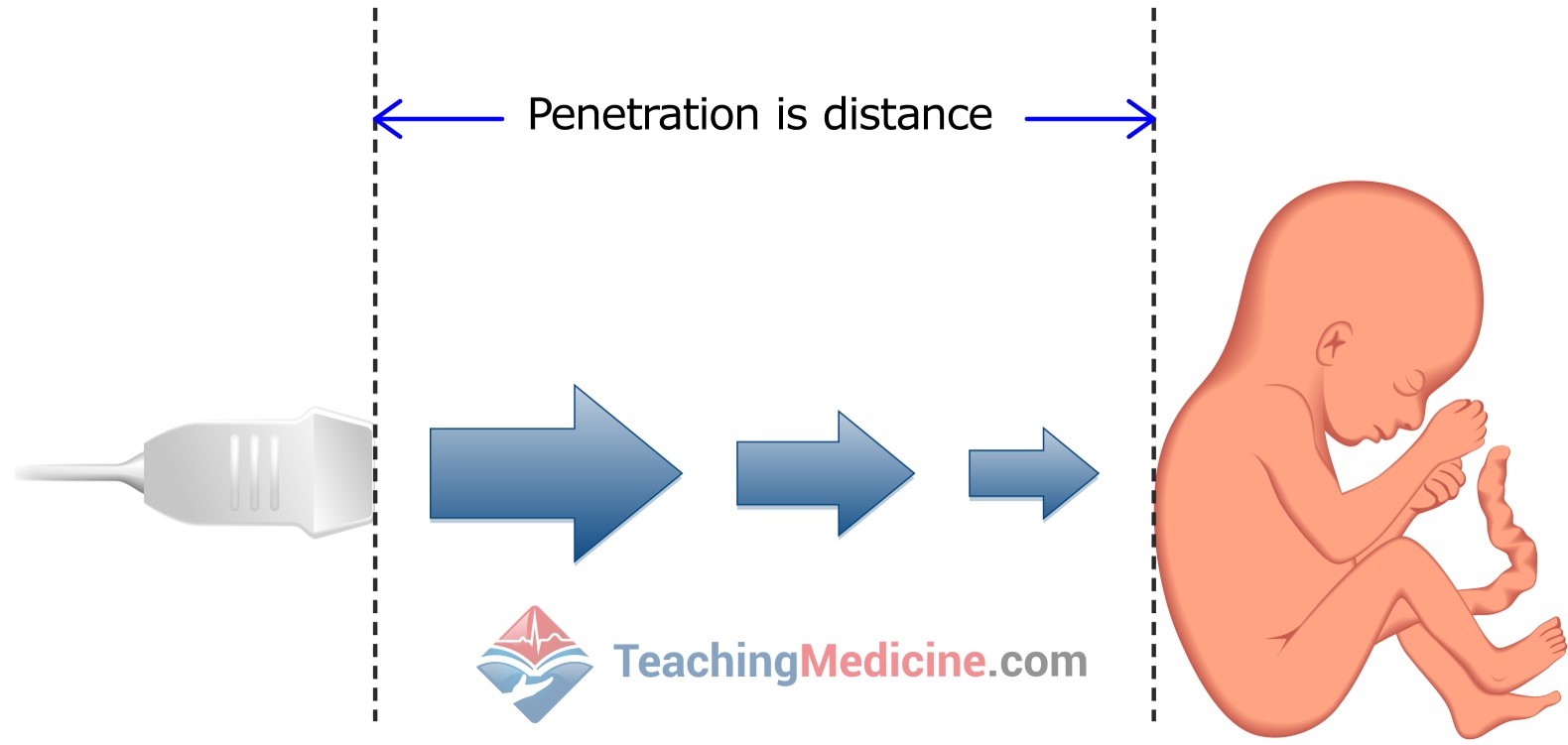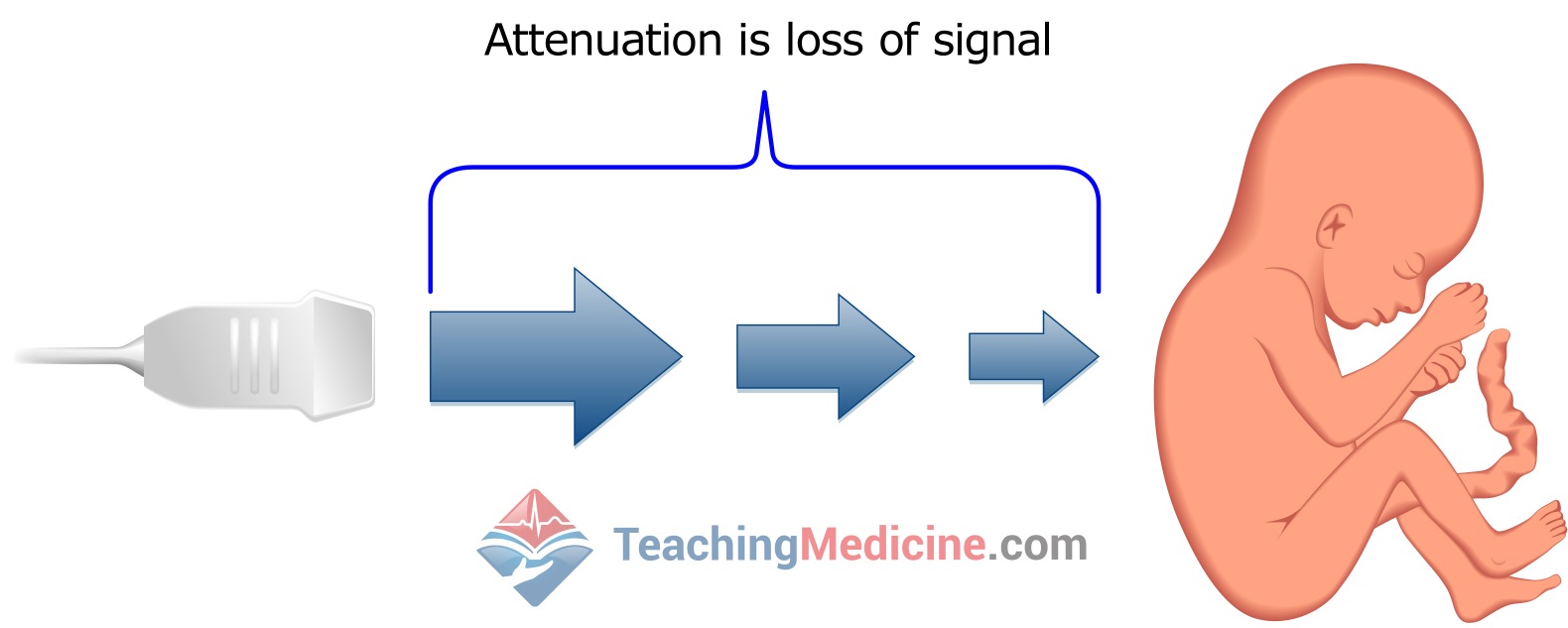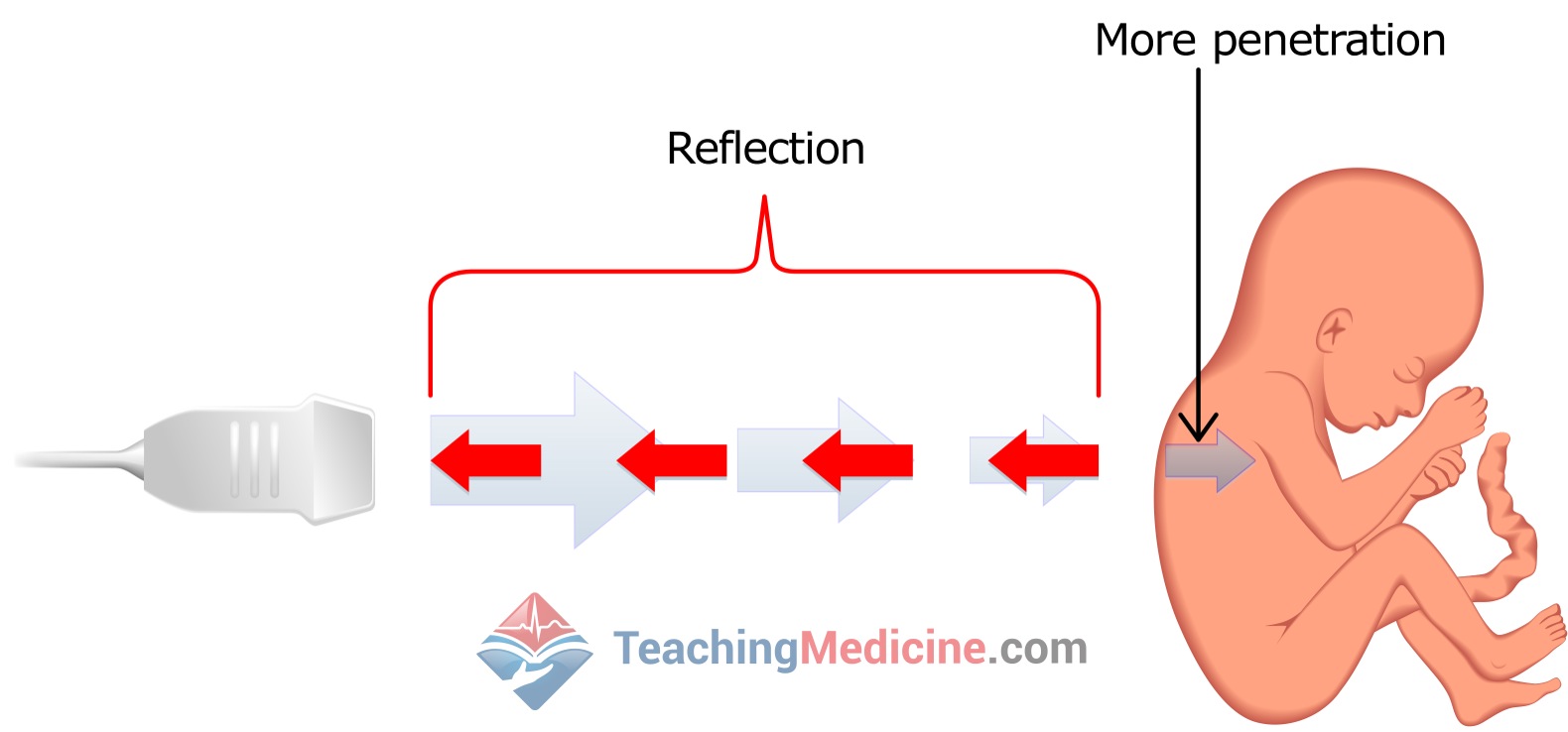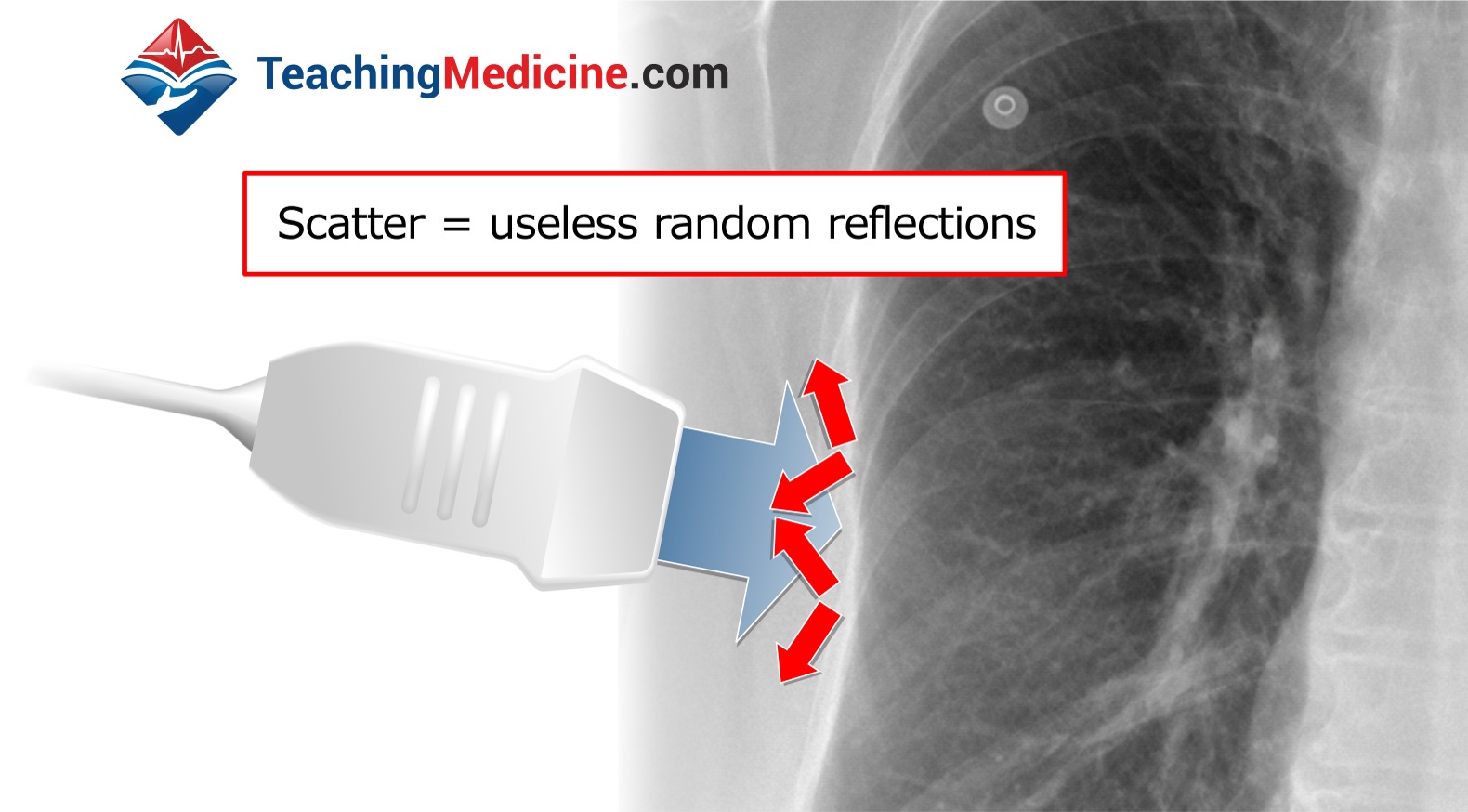The ultrasound probe has 2 jobs:- sending out a sound signal
- listening to the sound signal that comes back to it
This module will focus on what happens to the sound waves inside the body. Imagine you are knocking 2 stones together to make a sound:if a listener were on the other side of a thick brick wall, they might not hear you at all.
if you and your listener were both underwater, they could hear you at a great distance.
if you were in a canyon or a cathedral, you could hear your own echo, but you might have a difficult time telling where the sound was coming from.
Let's convert these 3 scenarios into ultrasound vocabulary: Penetration: the ability of the sound wave to go through an object.

Attenuation: how much energy does the sound lose over a distance (in water, it loses very little so you can hear noises from far away when you are under water).

Reflection: when the sound hits an object, it will bounce back to the sender.

Why are these key points important?as sound penetrates all tissues, the signal becomes attenuated.
the further the sound penetrates, the greater the attenuation (objects far away are harder to see).
reflection is required for the ultrasound probe to receive a signal to analyze ... so no reflection = no signal = you cannot see the object on the screen.
different tissues have different degrees of penetration, attenuation and reflection and therefore produce different appearances on the ultrasound screen.
The following list shows the properties of different tissues:bone: ultrasound does not go through bone but, reflection is close to 100% so bones give a strong signal. However, penetration is effectively 0%. Because penetration is close to zero, you can never see anything behind bone except for a black shadow.
soft tissues, fat and organs: penetration, attenuation and reflection are all "medium" levels. They give the appearance of different shades of grey.
liquids (blood, urine, amniotic fluid, cysts): penetration is high and attenuation is low. Therefore, it is very easy to see structures behind liquid. However, reflection of liquid is very low and therefore, liquid looks black on the ultrasound screen.
You might think that air/gas should also be very good to look through with ultrasound. However, it is not. This is because air causes a lot of scatter, which is useless chaotic reflections.scatter is caused by air or gas and it produces a useless snow storm on the ultrasound screen.
any time bowel loops or the lung interfere with the ultrasound signal, the image on the screen is completely obscured.

Gas can also be a problem outside the body. If there is air between the probe and the skin, the ultrasound waves will be scattered before even entering the body. Luckily, this problem can be solved through the application of generous amounts of ultrasound gel, which forms an acoustic “connection” between the probe and the skin.
One last concept before you move on: interfaces. An interface is a plane where objects with different properties are in contact with each other. The ultrasound machine is particularly good at making clear images of interfaces. The more different these tissues are the easier it will be to identify the structures. For example, blood against a solid organ (hematoma around the kidney) is easier to see compared to a section of contused spleen next to normal spleen.